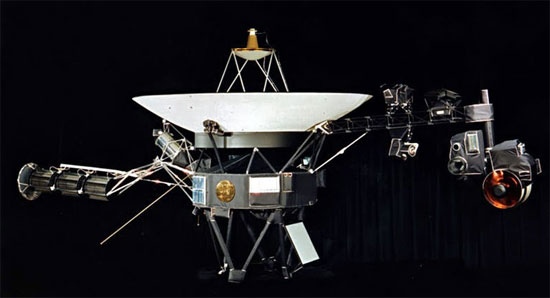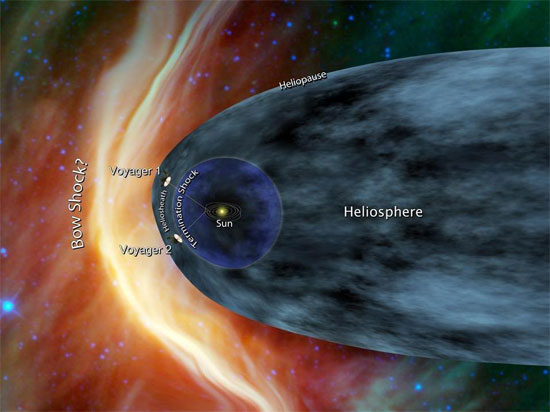Voyager 1 was out of the solar system
US scientists on September 12 confirmed NASA's Voyager 1 probe was out of the solar system, marking the first time a human spacecraft has gone so far.
>>>Controversy around Voyager's journey
Voyager 1, shaped like a satellite dish with an old-fashioned TV and rabbit-like antennas, was launched into space in 1977 to learn about the planets in the solar system.

Photo of one of two Voyager ships in 2002
But one unexpected thing was that the probe continued to move and is now about 19 billion kilometers from the sun, entering a cold, dark space between the stars, Ed Stone, the scientist. of the Voyager project said.
' We have really gone into interstellar space for the first time , ' said Stone from the California Institute of Technology. 'We got there. This is one thing we all hope when this project started 40 years ago. None of us knew what could last longer than the Voyager 'spacecraft.
Voyager 1 and Voyager 2 "twin" spacecraft were introduced into space 36 years ago with the main mission of exploring Jupiter and Saturn. They discovered many new details about the nature of Saturn's dust disc and found Jupiter's moon Io volcanoes.
Voyager 2 moved to Uranus and Neptune, before both missions were extended to explore the outer edge of the solar system.
Voyager's exact position was the subject of intense controversy over the past year, because scientists didn't know exactly when the spacecraft would cross the border of the solar system, while the device on board was The design to detect these changes has long been broken.

The simulation of Voyager's position on the edge of the solar system
However, NASA scientists now agree that Voyager was officially outside the heliosphere, which extended to cover all planets in the solar system.
These studies, which describe conditions that suggest Voyager actually left the solar system in August 2012, was published in the American Journal of Science.
NASA claims Voyager 1 'is in a transition zone just outside the helios, where some of the effects from the sun are still present'.
Voyager 1, along with Voyager 2 a few years behind it, transmitted data to Earth scientists on August 25 last year, showing a sudden drop in energy-carrying materials, or cosmic rays, which are born inside the heliosphere.
NASA said the total cost of two Voyager expedition projects was $ 988 million, including launch costs, two spacecraft's nuclear batteries and operating group costs.
'Even if it takes 36 years, this is still a surprise for me,' said Bill Kurth, from Iowa University and co-author of the article in Science magazine. 'I think Voyager is a much bigger journey than anyone can dream of.'
- Voyager 2 leaves the Solar System, enters the interstellar realm
- People are about to leave the Solar System
- The American spacecraft exits the solar system
- Voyager 1 overview
- NASA Voyager 1 spacecraft comes to the edge of the solar system
- Voyager's controversy
- The American airship is about to fly out of the solar system
- Voyager 1 is about to
- Voyager crossed the solar system
- Voyager 1 touch lane
- Voyager 2 Explorer: Discovery of the Curved Solar System
- Voyager 2 overview
 Van Allen's belt and evidence that the Apollo 11 mission to the Moon was myth
Van Allen's belt and evidence that the Apollo 11 mission to the Moon was myth The levels of civilization in the universe (Kardashev scale)
The levels of civilization in the universe (Kardashev scale) Today Mars, the sun and the Earth are aligned
Today Mars, the sun and the Earth are aligned The Amazon owner announced a secret plan to build a space base for thousands of people
The Amazon owner announced a secret plan to build a space base for thousands of people